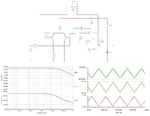engallam
Junior Member level 1
Hi , I have circuit generate sine and tringle wave have frequency between 100:4000 Hz with Vpp 5 volt.
I need circuit amplify these signals to be 80volt with max current 250 mA.
Thanks alot ?
I need circuit amplify these signals to be 80volt with max current 250 mA.
Thanks alot ?

